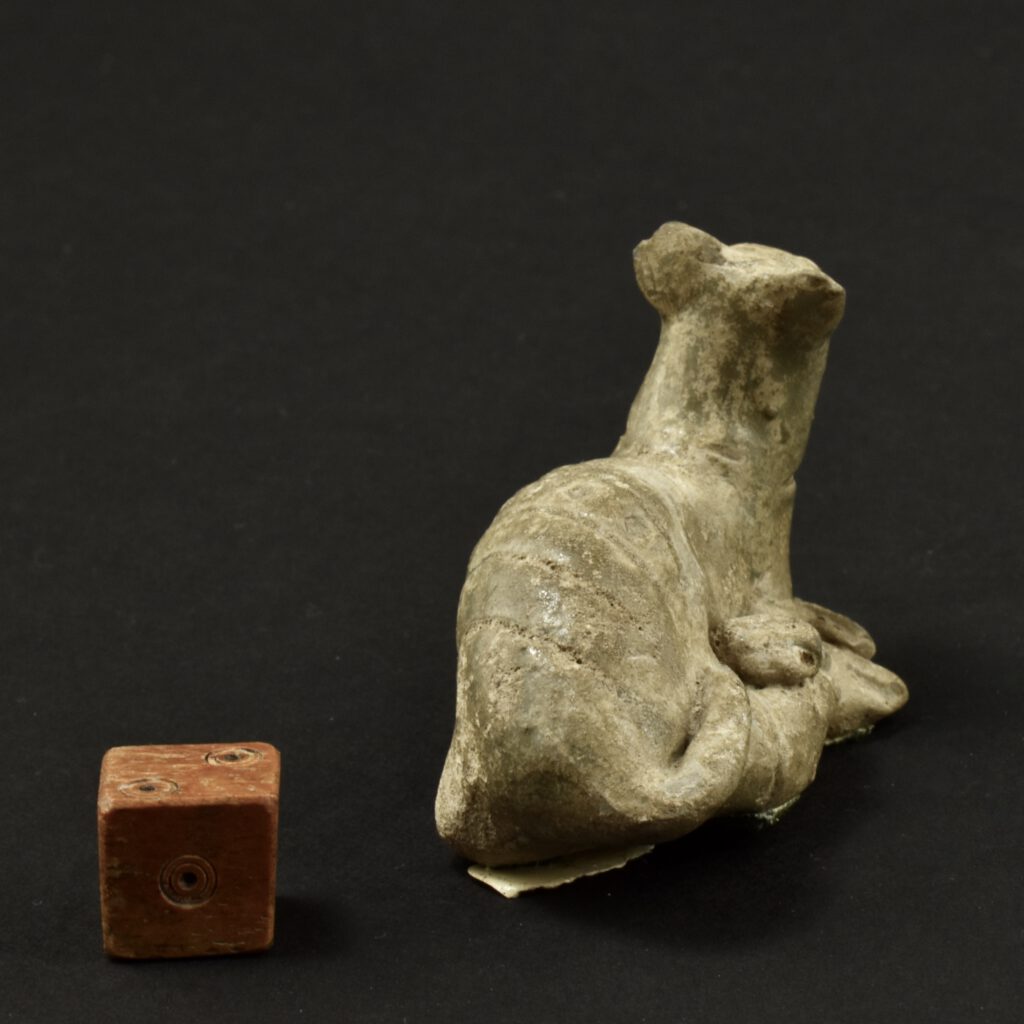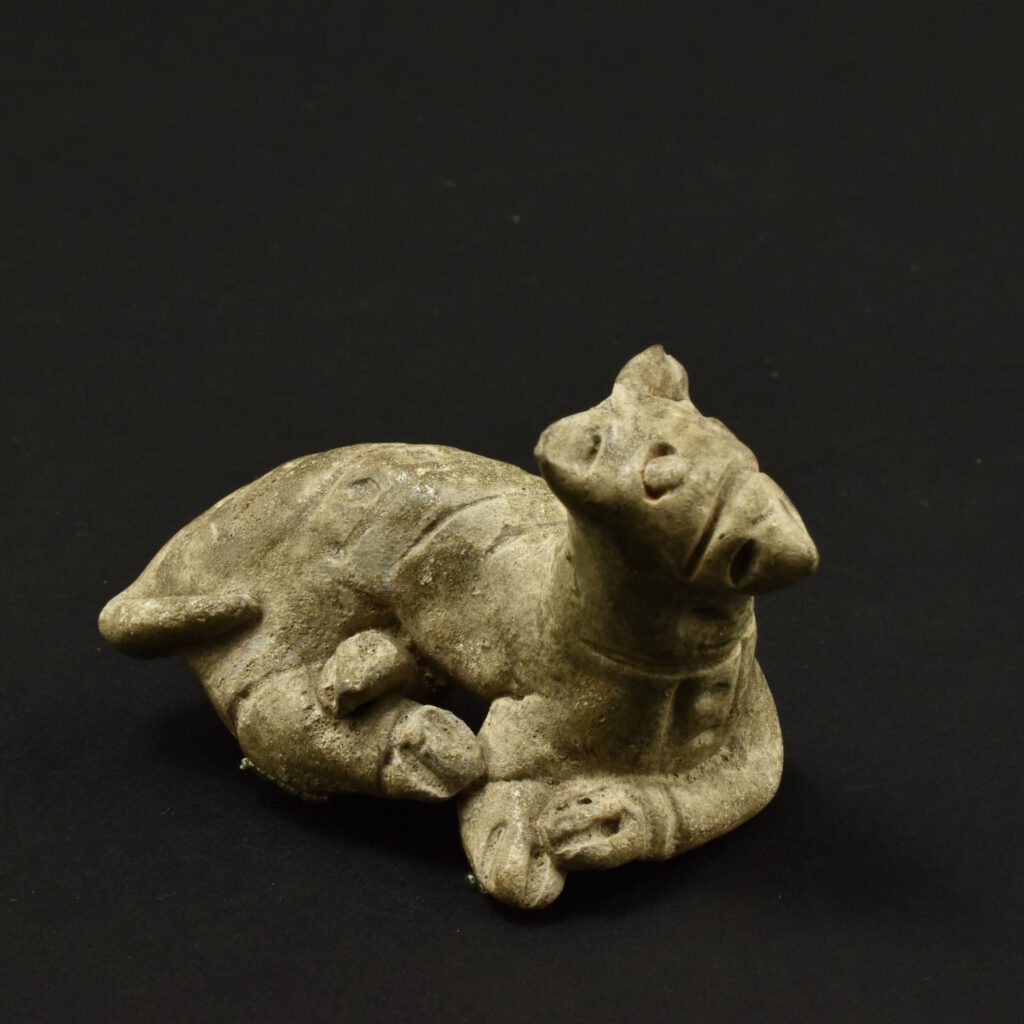
A Jin Dynasty Green Glazed Stoneware Model of a Dog
A Jin Dynasty, 266–420, Yue Celadon, Zhejiang Kilns, Model of a Seated Dog. This hand-modelled dog has its legs placed in a very awkward way and has what looks like a perplexed expression. The glaze is partly degraded which is typical of Chinese green wares of this type, which are now referred to a celadon, from the Jin dynasty. For more information about Chinese miniatures ,see Chinese miniatures see : Small China, Early Chinese Miniatures : a rediscovery of a cultural phenomenon (Koos de Jong, Arnoldsche Art Publishers. ISBN 978-3-89790-631-0. 2021). For a similar hand-modelled Jin dog, from the Ingram Gift, see Catalogue of Chinese Green Wares in the Ashmolean Museum Oxford (Mary Tregear, Oxford at The Clarendon Press, 1976. ISBN 0-19-813167-4) page 32, item 57.
See Below For More Photographs and References.
SOLD
- Condition
- In very good condition, a very small chip to one ear, minor glaze degradation.
- Size
- Length 6.3 cm (2 1/2 inches).
- Provenance
- A Private Collection of Chinese Ceramic Miniature, label to base '152'.
- Stock number
- 26123
- References
- For a similar hand-modelled Jin dog, from the Ingram Gift, see Catalogue of Chinese Green Wares in the Ashmolean Museum Oxford (Mary Tregear, Oxford at The Clarendon Press, 1976. ISBN 0-19-813167-4) page 32, item 57.
Information
Small China, Early Chinese Miniatures
By Koos de Jong

Small China presents Chinese miniatures from 5,000 BC up to the 15th century. The pocket size representations of supernatural beings, people, animals, or everyday objects are virtually uncharted in East Asian crafts – even in China, these objects in jade, bronze, ivory, and porcelain are little known. Koos de Jong explores their arcane meanings and traces their production and the market for such treasures, which, contrary to official secular and religious art, include those devoted to taboo subjects such as erotica or humour. The miniatures had many different functions, from insignia, fetishes and devotional objects to burial gifts or toys. They could express good wishes or even serve as bribes. A rare glimpse into the everyday life of ordinary people and into Chinese handicrafts from thousands of years ago.








